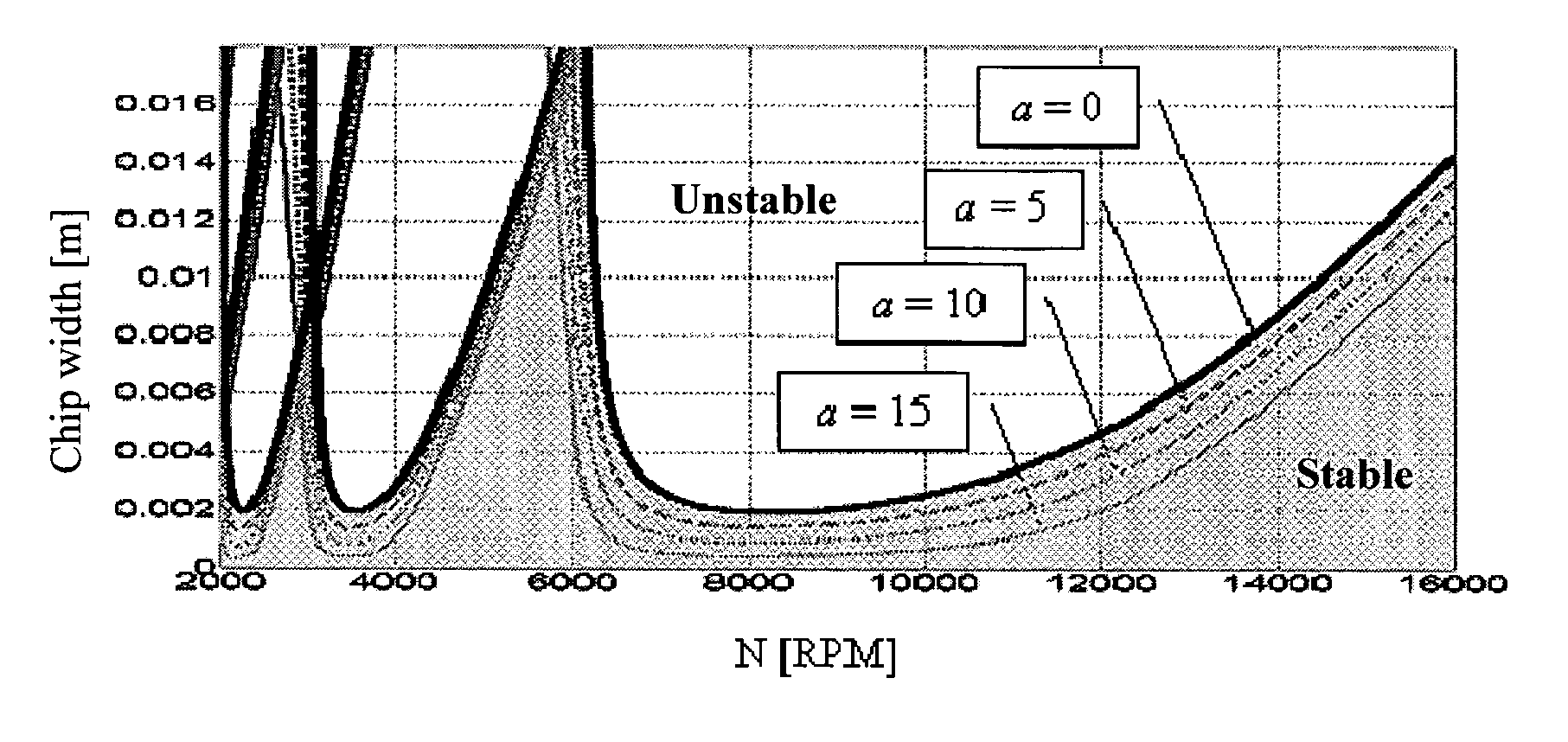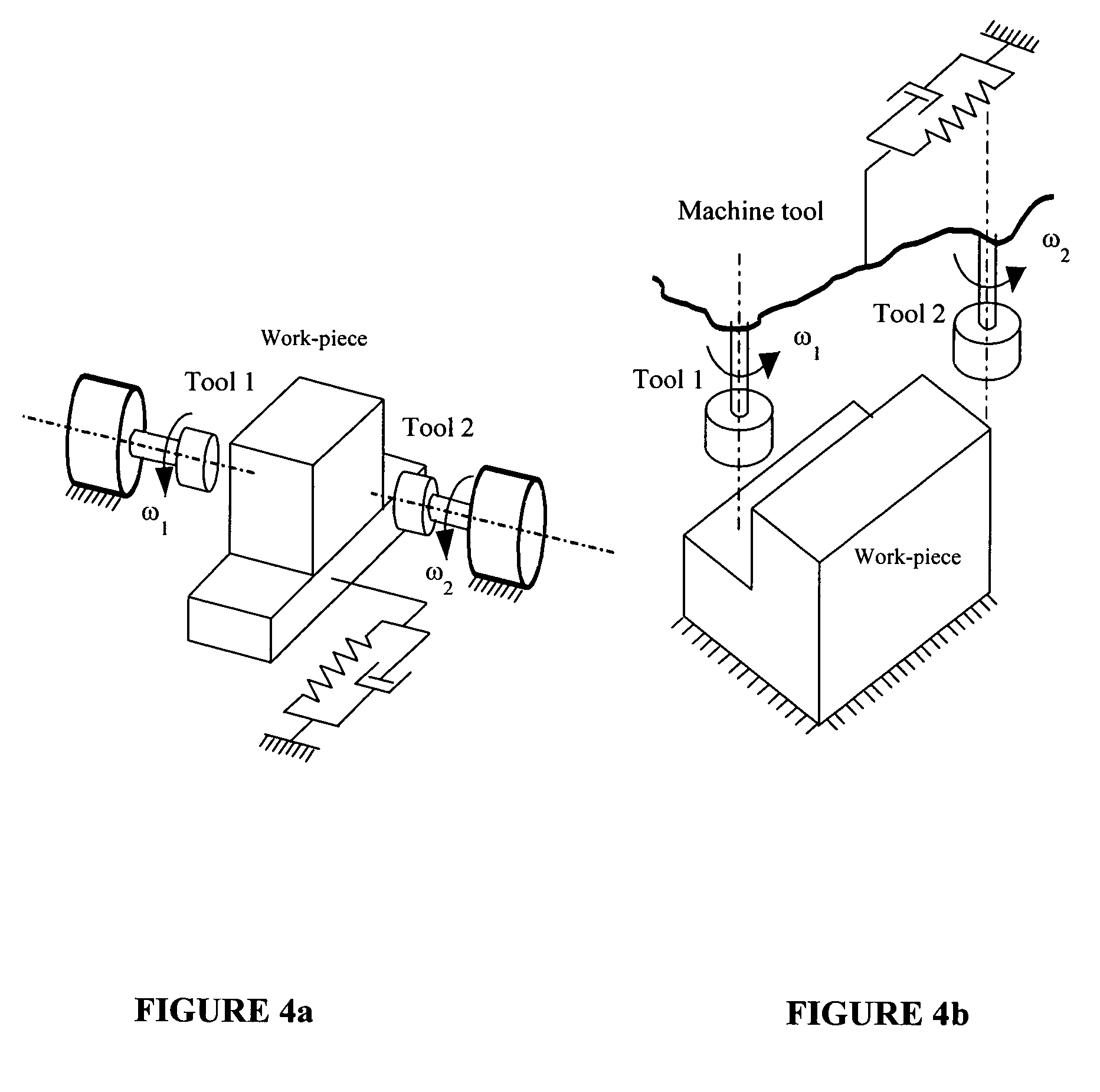System and method for chatter stability prediction and control in simultaneous machining applications
a simultaneous machining and stability prediction technology, applied in the direction of process and machine control, process control, instruments, etc., can solve the problems of inability to assess the regenerative force of sm applications, the dynamic stability repercussions of such settings are poorly understood, and the dynamic stability of sm applications is considerably more complex, so as to reduce and/or control the chatter of machine tools and optimize the effect of machining utilities and applications
- Summary
- Abstract
- Description
- Claims
- Application Information
AI Technical Summary
Benefits of technology
Problems solved by technology
Method used
Image
Examples
case study ii
f CTCR Methodology to Single Tool Machining (STM)
[0083] For the conventional chatter stability study (with a single cutter, n=1), a regenerative dynamics with one single time delay appears. The characteristic equation (5) reduces to:
CE(s,τ,b)=a0(b,s)+a1(b,s)e−τs=0 (17)
where the only delay is τ[sec]=60 / N[RPM], N is the spindle speed and b is the width-of-cut. There are numerous case studies in the literature on this problem. For demonstration purposes, orthogonal turning given in Equation 7 of a publication by Olgac et al. is studied [see, N. Olgac and M. Hosek, “A New Perspective and Analysis for Regenerative Machine Tool Chatter,”International Journal of Machine Tools &Manufacture, vol. 38, pp. 783-798, 1998], which starts from the characteristic equation: 1+bCCos β(1-ⅇ-τ s)m s2+cs+k=0(18)
where b is the chip width, C, β, m, c and k are the constants related to the cutting dynamics. This equation can also be written as:
CE(s,τ,b)=ms2+cs+k+bC Cos β(1−e−τs)=0 (19)
whic...
PUM
| Property | Measurement | Unit |
|---|---|---|
| diameter | aaaaa | aaaaa |
| depths | aaaaa | aaaaa |
| chatter frequencies | aaaaa | aaaaa |
Abstract
Description
Claims
Application Information
 Login to View More
Login to View More - R&D
- Intellectual Property
- Life Sciences
- Materials
- Tech Scout
- Unparalleled Data Quality
- Higher Quality Content
- 60% Fewer Hallucinations
Browse by: Latest US Patents, China's latest patents, Technical Efficacy Thesaurus, Application Domain, Technology Topic, Popular Technical Reports.
© 2025 PatSnap. All rights reserved.Legal|Privacy policy|Modern Slavery Act Transparency Statement|Sitemap|About US| Contact US: help@patsnap.com



